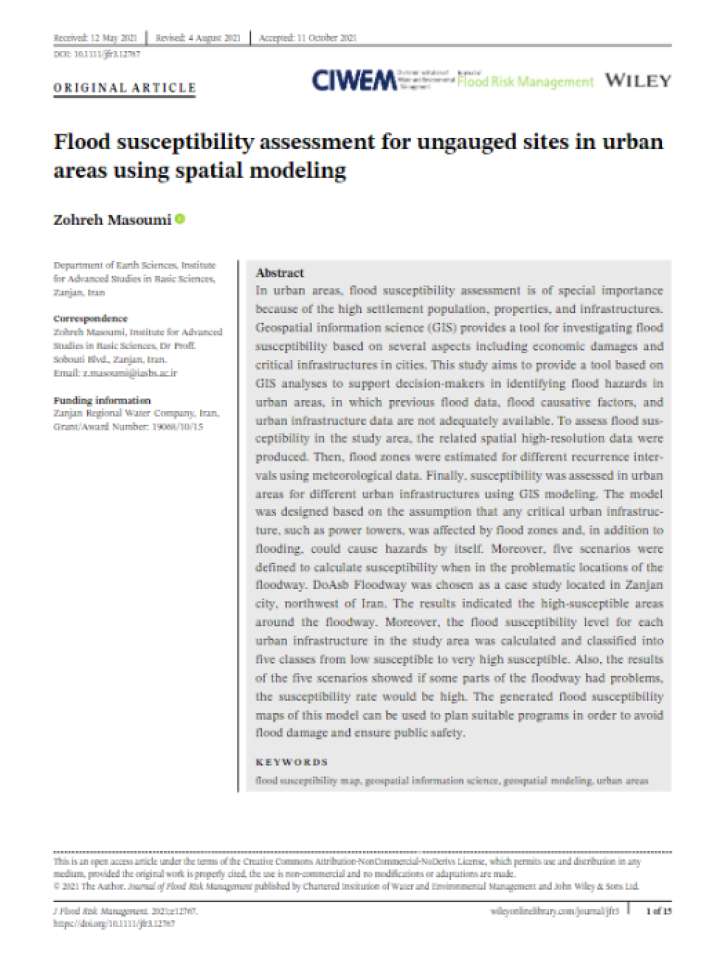Flood susceptibility assessment for ungauged sites in urban areas using spatial modeling
This study aims to provide a tool based on geospatial information science (GIS) analyses to support decision-makers in identifying flood hazards in urban areas, in which previous flood data, flood causative factors, and urban infrastructure data are not adequately available. To assess flood susceptibility in the study area, the related spatial high-resolution data were produced. Then, flood zones were estimated for different recurrence intervals using meteorological data. Finally, susceptibility was assessed in urban areas for different urban infrastructures using GIS modeling. The model was designed based on the assumption that any critical urban infrastructure, such as power towers, was affected by flood zones and, in addition to flooding, could cause hazards by itself. DoAsb Floodway was chosen as a case study located in Zanjan city, northwest of Iran.
The results indicated the high-susceptible areas around the floodway. Moreover, the flood susceptibility level for each urban infrastructure in the study area was calculated and classified into five classes from low susceptible to very high susceptible. Also, the results of the five scenarios showed if some parts of the floodway had problems, the susceptibility rate would be high. The generated flood susceptibility maps of this model can be used to plan suitable programs in order to avoid flood damage and ensure public safety.
Explore further
